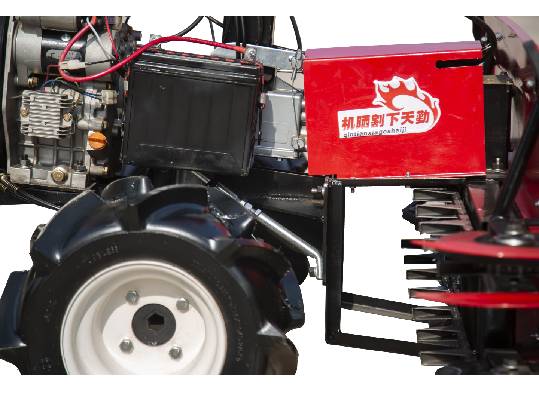A Comprehensive Guide to Pull-Type Corn Harvesters and Their Benefits
The Pull-Type Corn Harvester Revolutionizing Modern Agriculture
Corn has long been a staple crop in agriculture, serving as a primary food source and a vital component in various industries. As demand for corn continues to rise due to its utility in food production, livestock feed, and biofuel generation, the need for efficient harvesting methods has become paramount. Among the technological advancements in agricultural equipment, the pull-type corn harvester stands out as a significant innovation, transforming the way farmers cultivate and harvest corn.
Understanding Pull-Type Corn Harvesters
A pull-type corn harvester is essentially a harvesting machine that is towed by a tractor. Unlike self-propelled harvesters, which come equipped with their own engines, pull-type models depend on the tractor for mobility and power. This configuration allows for increased flexibility and cost-effectiveness, making it an appealing choice for many farmers, especially those working on smaller to mid-sized farms.
The design of pull-type corn harvesters typically includes a header that is specifically engineered for corn. The header efficiently cuts the stalks and collects the ears of corn, while the combine mechanism processes the harvested material. One of the key benefits of this equipment is its versatility; it can be easily attached or detached from a variety of tractors, giving farmers the ability to use one tractor for multiple tasks throughout the growing season.
Benefits of Pull-Type Harvesters
1. Cost Efficiency One of the most significant advantages of pull-type corn harvesters is their lower initial cost compared to self-propelled models. Farmers can invest in these machines without the financial burden of purchasing an entirely new harvester. Additionally, because the tractor can be used for other farming operations, farmers can optimize their equipment usage throughout the year.
2. Scalability Pull-type corn harvesters are ideal for operations of various sizes. For small to mid-sized farms, the ease of attaching the harvester to existing equipment makes it a practical choice. Larger operations can also benefit, as these harvesters can be paired with more powerful tractors to increase efficiency and productivity.
pull type corn harvester

3. Ease of Use and Maintenance Generally, pull-type harvesters are easier to operate and maintain than their self-propelled counterparts. Farmers familiar with tractor operation will find adjusting to a pull-type harvester straightforward. Moreover, maintenance tasks can often be performed with basic mechanical skills, reducing downtime during the critical harvest season.
4. Adaptability The agricultural landscape varies greatly from region to region, and the needs of farmers are diverse. Pull-type corn harvesters can be customized with various attachments and adjustments to accommodate different types of corn and harvesting conditions. This adaptability makes them a favored choice in many agricultural settings.
Challenges and Considerations
While pull-type corn harvesters offer many benefits, they are not without their challenges. For instance, they require a suitable tractor that can handle the weight and power demands of the harvester. Additionally, their reliance on tractors means that field conditions such as wetness or rough terrain may limit their operational effectiveness.
Farmers must also consider the harvesting capacity of pull-type models compared to self-propelled harvesters. The speed and efficiency of harvesting can be influenced by the size and power of the tractor used, as well as the skill of the operator. Nonetheless, many farmers find that the trade-offs in purchasing and operational costs are worthwhile for their operations.
The Future of Pull-Type Corn Harvesters
As agricultural technology continues to evolve, so too will the designs and capabilities of pull-type corn harvesters. Innovations in automation, data analytics, and precision agriculture practices will likely enhance the functionality of these machines. For example, integrating GPS technology could help optimize the harvesting process, improving efficiency and reducing waste.
In conclusion, pull-type corn harvesters are a vital asset in modern agriculture, bridging the gap between cost-effectiveness and operational flexibility. As farmers strive to meet growing demands, the evolution of this harvesting technology will undoubtedly play a crucial role in shaping agricultural practices for years to come. Whether for small family farms or larger agricultural enterprises, the pull-type corn harvester represents a reliable solution for improving harvest efficiency and productivity, ultimately contributing to food security and sustainability in farming.
Latest news
-
When to Upgrade Your Old Forage HarvesterNewsJun.05,2025
-
One Forage Harvester for All Your NeedsNewsJun.05,2025
-
Mastering the Grass Reaper MachineNewsJun.05,2025
-
How Small Farms Make Full Use of Wheat ReaperNewsJun.05,2025
-
Harvesting Wheat the Easy Way: Use a Mini Tractor ReaperNewsJun.05,2025
-
Growing Demand for the Mini Tractor Reaper in AsiaNewsJun.05,2025







